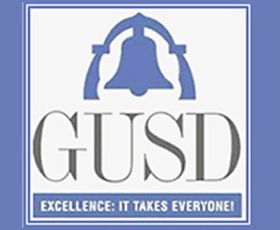It’s lunchtime at a Gilroy high school campus and the music is blaring in the quad. Students are mingling with friends in the lunch line and eating pizza and fries at the lunch tables. It’s a snapshot of an ordinary high school; but looking deeper, one can see it’s anything but. Beyond the boundaries appear buildings that are home to a larger campus and older students: Gavilan Community College.
Unlike most high schools, the students at this one can take classes with those students beyond their high school quad. This is the Dr. TJ Owens Gilroy Early College Academy (GECA)—an educational partnership between Gilroy Unified School District and Gavilan College—and it is home to approximately 250 students.
To receive diplomas, principal Sonia Flores said GECA students are expected to take at least 40 college units.
“Some kids want to take up to 60 units to get their (associate’s degree),” she said. “They can, but it requires them to put in a little more effort.”
One-fourth of these students are freshmen who completed middle school in the spring. The newness of any high school can be intimidating, but at this one, the first year can be downright daunting.
GECA has implemented a program that groups incoming freshmen with junior or senior mentors, known as the Mentor/Mentee Program, which helps them acclimate to high school—and to college.
“We have a very high standard for student behavior since they are taking college classes at Gavilan,” Flores said. “(This) program came from the peer-to-peer support through the four years here because GECA is rigorous … and then it was also kind of a behavioral expectation.”
When GECA first opened in 2007, there were 63 students in the student body and the freshmen were able to take college classes during the first semester. However, time has shown the need for a slower pace for GECA freshmen, according to counselor Marcy Ratliff.
“This (first) semester, we’re letting the ones with good GPAs coming in from 8th grade, and who are doing well here, to take keyboarding,” Ratliff said. “Next semester, they can take more, like a communications class, art class or music class. They can’t take psych or chemistry yet, but they can take those classes and get a gentle start.”
A gentle start for the freshmen class is exactly why the Mentor/Mentee Program exists. Its approach, however, continues to evolve since it began in 2011. Principal Flores explained that with every new school year there is a new senior who runs the program.
“Each student who takes it on makes it their own,” she added. “Every year it changes a bit.”
This year, senior Candice Clifford has taken over as the Mentor/Mentee Club Commissioner and has implemented Mentor/Mentee Activity Days once a month during lunch. For October, the theme of the hour was Halloween. Mentors were mummy-wrapped by their mentees, and then also worked with their mentees to figure out what “body-part” was in a bag during a guessing game.
“I wish we had done this last year,” said sophomore Morgan Cramer.
Cramer said when she was a freshman, the program wasn’t set up as it is now.
“We were assigned a mentor and there were very few times we met, maybe three meetings the entire year,” she said.
Junior Kendall White said she feels the program helps the freshmen understand the demands of the school.
“It helps a lot with the inside stuff, the college aspect mostly,” she said. “The program helps (freshmen) know what’s going on now, versus sophomore or junior year when they really need to know.”
Flores is pleased with what Clifford has done this year.
“She is all about making sure everyone is happy and involved in the school, which is fantastic,” she said.
Having been at GECA since her freshman year, Clifford knows the demands and hopes to change the way mentors and mentees see the program.
“It’s not like you have to do this; just be friends with them, enjoy having time with them and help them through.”













